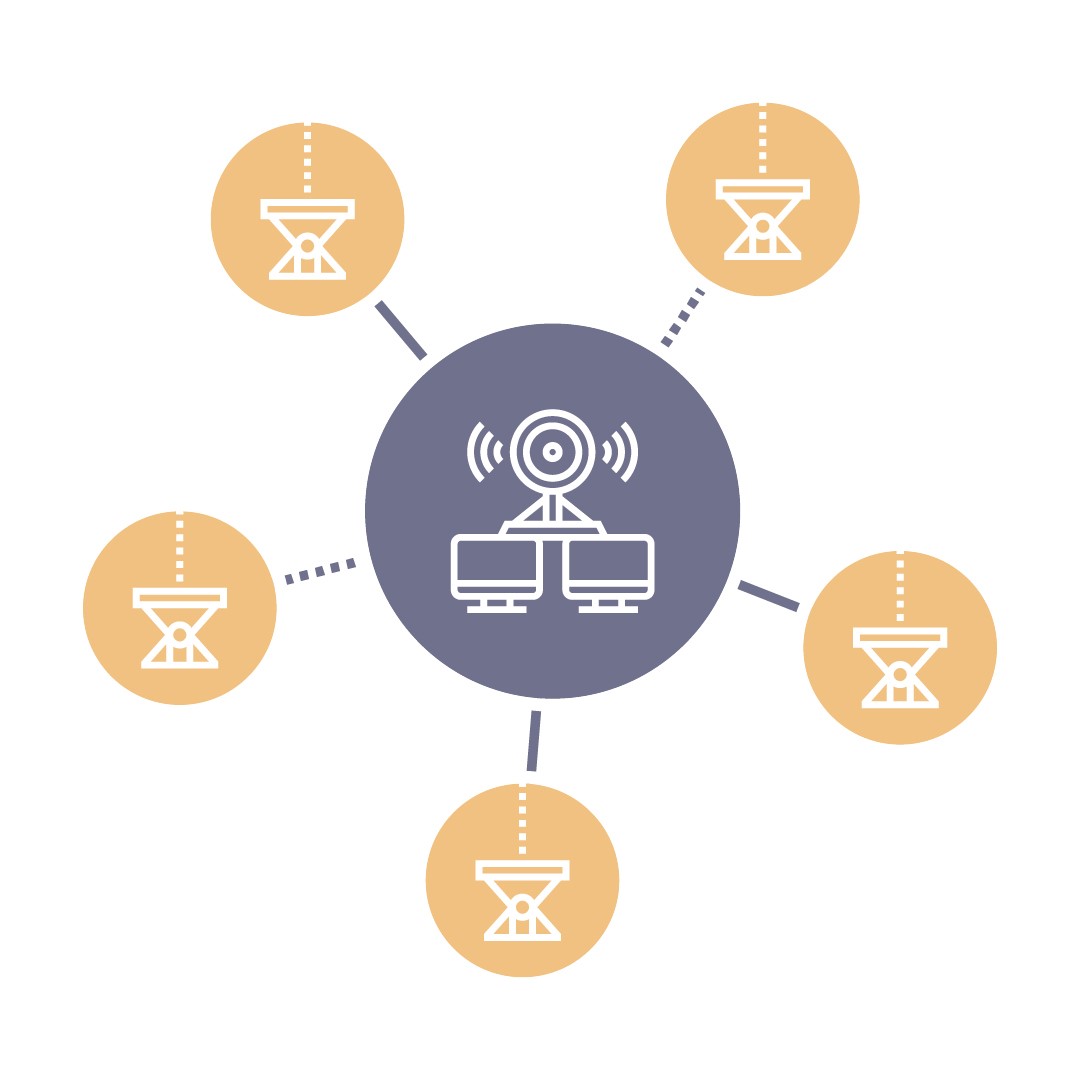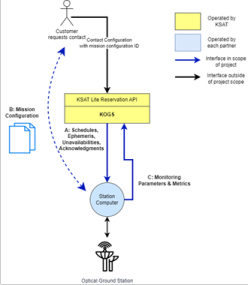
-
StatusCompleted
-
Status date2025-04-07
-
Activity Code6C.003
While terrestrial optical communication has changed the way we work, but spaceborne optical links are still not standardized and Direct to Earth Links are not used in an operational environment. The project realizes a first network of optical stations that can be used for supporting optical payloads on any spacecraft.

The lack of an operational optical ground segment is the reason that there are so few optical payloads. The lack of optical spacecraft makes it hard to invest into optical ground systems.
Moreover interoperability concerns arise from different ‘standards’ (CCSDS, SDA) and no commercial modem available until end of the study.
No operational optical network that is available to any mission exists. The nucleus network will change this. Once the optical market gets enough traction the network can easily be extended around the world and become a high data rate complement to RF networks. The network provides downlink capabilities independent of carrier frequency.
The optical stations of DLR, ESA, TNO and KSAT are all different. The Nucleus network is realized by software that interfaces between these heterogenous station towards the KSAT Network Operations Center. As a result, all four stations can be addressed in the same user-friendly way as any other KSAT antenna.
A common ICD between the stations and the Network Operations Center specifies the developed software drivers. This emulates the feeling of a seamless network and makes it easy to schedule the resources through the standard KSAT interface.
The software and interfaces have been designed to govern the interaction between the KSAT Reservation system and each partner station’s Station Computer.

During the Definition Phase the Architecture and Interfaces to the Nucleus Network are analysed. The software design is done. During the Development Phase the software is implemented, installed and tested on a subsystem level at the Nucleus sites.
During the Demonstration Phase all elements are tested together against a live optical satellite (NorSat-TD). The Nucleus Network will be scheduled remotely from Tromsø Network Operations Center.
The European Optical Nucleus Network activity is completed in December 2024.
The main achievements are:
- A first step towards a commercial optical communication network was achieved with four Optical Ground Stations (OGSs) integrated to KSAT Monitoring and Control (M&C) system through APIs.
- The ESA IZN-1 at Tenerife -Spain, the GSOC station at Oberpfaffenhofen-Germany (to be further moved to Almeria Spain), the TNO station at The Haag-Netherlands and the KSAT station at Nemea-Greece were connected to KSAT NOC (Network Operations Center) in Tromsø.
- The interface to the commercial ground station network was partially experimentally validated performing links to the optical terminal Small-Cat in NorSat-TD LEO satellite. This includes the establishment of network connectivity, managing schedules and developing software to interface the OGS’s with KSAT network operation centre (NOC).
Future work on the Nucleus is required to offer user service, download data from the different locations and made available in the cloud.




